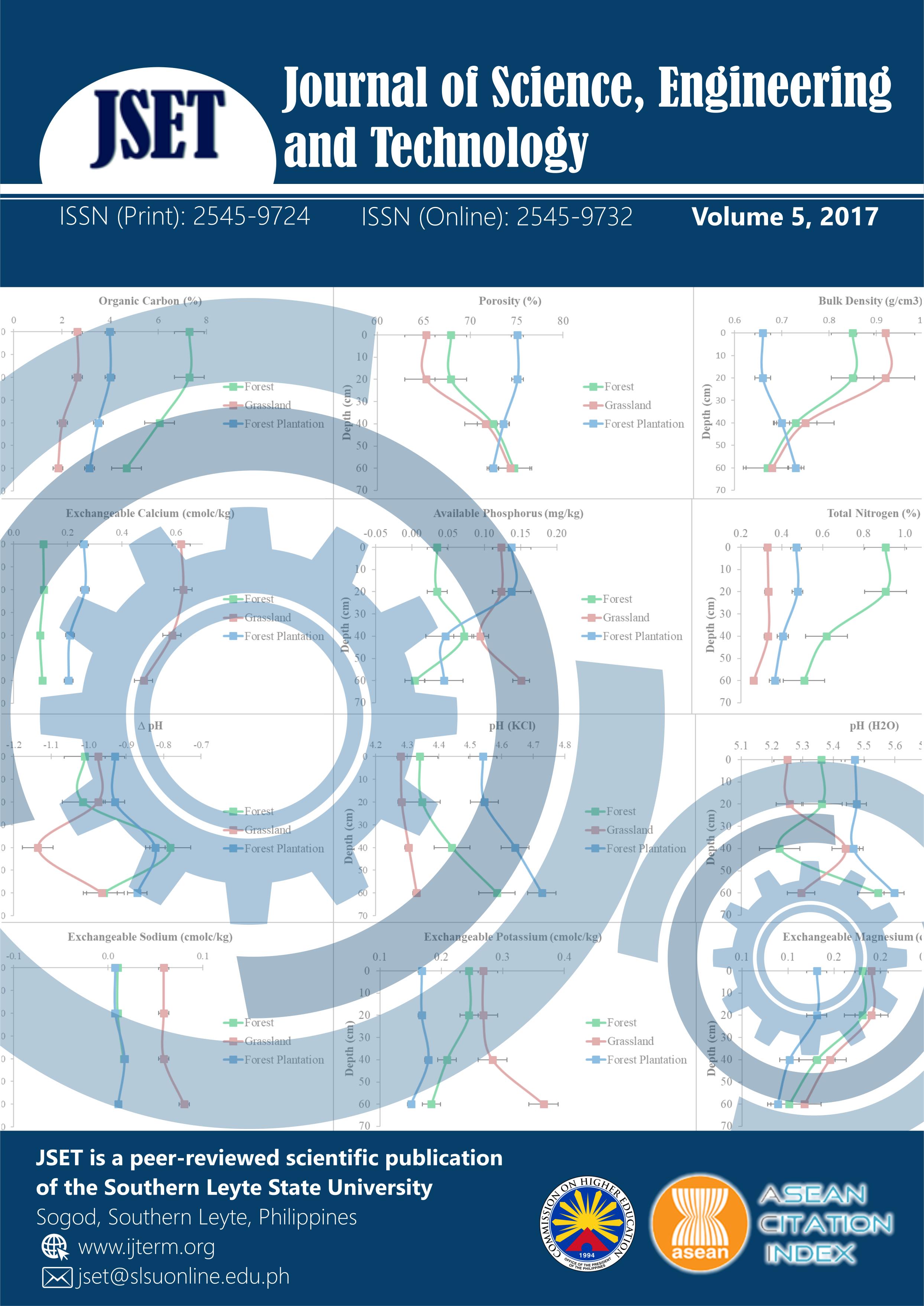Carbon Storage and Nutrient Stocks Distribution of Three Adjacent Land Use Patterns in Lake Danao National Park, Ormoc, Leyte, Philippines
DOI:
https://doi.org/10.61569/3xj10s38Keywords:
Andisol, forest plantation, grassland, organic carbon, secondary forest, total aboveground biomassAbstract
The country experienced drastic decrease of forest cover due to land use conversion, cutting of trees and doing agriculture to support food security. Secondary forests are an important component of land cover in the tropics, and when transformed or converted into another land-use, it is believed to have negative effects on some soil properties and forest ecosystem in general. A paired-area/space-for-time substitution approach was conducted to determine the changes in carbon storage: soil organic carbon (SOC) and total above ground biomass (TAGB), soil nutrient stocks and fertility status due to land use change. The study was conducted in Lake Danao National Park (LDNP), Ormoc City, Leyte, Philippines. Adjacent to the secondary forest (<1 km away), grassland and forest plantation land uses were chosen and sampled for possible changes on SOC, TAGB and nutrient stocks due to land use change. Results showed that conversion of forest to grassland and forest plantation decreased the organic carbon, exchangeable aluminum, exchangeable acidity, effective cation exchange capacity, TAGB while pH in H2O; exchangeable magnesium and potential cation exchange capacity increased when the forest was converted to grassland and forest plantation. Additionally, available P, base saturation, Ca, K, and Na increased while total N, and SOC stocks decreased when the forest was converted to grassland and forest plantation. This study indicates that conversion of forest to grassland and forest plantation greatly affected the SOC stocks, TAGB, soils nutrient stocks and fertility status. It also revealed that changes in soil properties largely depended upon the land use.
Downloads
Published
Issue
Section
License

This work is licensed under a Creative Commons Attribution 4.0 International License.
This is an open access article distributed in accordance with the Creative Commons Attribution 4.0 Unported (CC BY 4.0) license, which permits others to copy, redistribute, remix, transform and build upon this work for any purpose, provided the original work is properly cited, a link to the license is given, and indication of whether changes were made. See: Creative Commons Attributions 4.0 International License.








